How Do I Add Rss Feeds To My Wordpress Blog
Complete Guide to RSS and How to Use It with WordPress
Last updated on:
What if users didn't have to come to your WordPress site in order to read your articles? That would certainly make it easier for users since they wouldn't have to navigate to ten of their favorite blogs and news sources to get their daily information. It would also be nice for the website owners, since it would allow you to distribute your content in a more efficient manner, delivering the content to where the customers want it to be.
That's the whole idea behind RSS.
RSS has been around since 1999, and it works as a distributor of content across the web. In addition, it combines with aggregators for easier reading, compiling, and organization.
In short, RSS keeps your readers reading all the content they want, in one location. This way, they don't have to bookmark their favorite news websites or search on Google whenever they want a good read.
How RSS Works
RSS, or Really Simple Syndication, offers readers a chance to subscribe to your blog. After that, the reader needs to use an RSS reader or aggregator to consume the content.
In order to subscribe, the reader clicks on a Subscribe button. That's it. Sometimes it's difficult to locate an RSS Subscribe button on a website or blog, but you can often find them near the social media buttons, in the footer, or by searching "Website Name" + "RSS Feed" in Google.
Sometimes it's difficult to locate an RSS Subscribe button on a website or blog, but you can often find them near the social media buttons, in the footer, or by searching "Website Name" + "RSS Feed" in Google.
RSS feeds can also be broken up based on category or topic. This is far more relevant to large online magazines (like the Wall Street Journal or USA Today). Why is that the case? Because those publications have dozens, if not hundreds, of sections.
Why is that the case? Because those publications have dozens, if not hundreds, of sections.
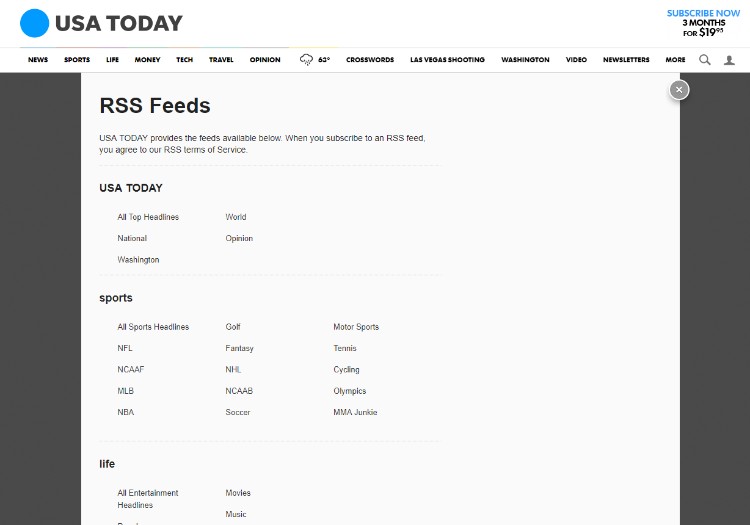
Therefore, a reader could decide to subscribe to the entire paper or just the sports section.
And that's another benefit of having an RSS feed. It's entirely possible that some readers only find some of your articles appealing. Therefore, they might only want to subscribe to something like the travel or business sections.
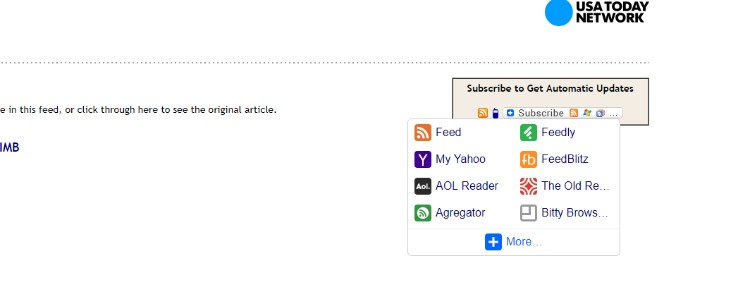
After subscribing to the RSS feed, it's required for the user to specify how they're going to consume the information. As mentioned, this requires some sort of aggregator or RSS reader.
The most popular option for this used to be Google Reader. It was a clean, extremely effective way of bringing dozens of RSS feeds together.
Unfortunately, Google Reader stopped operating in 2013. So, that's not an option anymore. However, there are plenty of other RSS readers being used today.
Which RSS Readers Come Highly Recommended?
After the shutdown of Google Reader, Google mainly recommended that all customers be transferred over to Feedly. It's definitely the most similar to Google Reader, but it all depends on your own preferences.
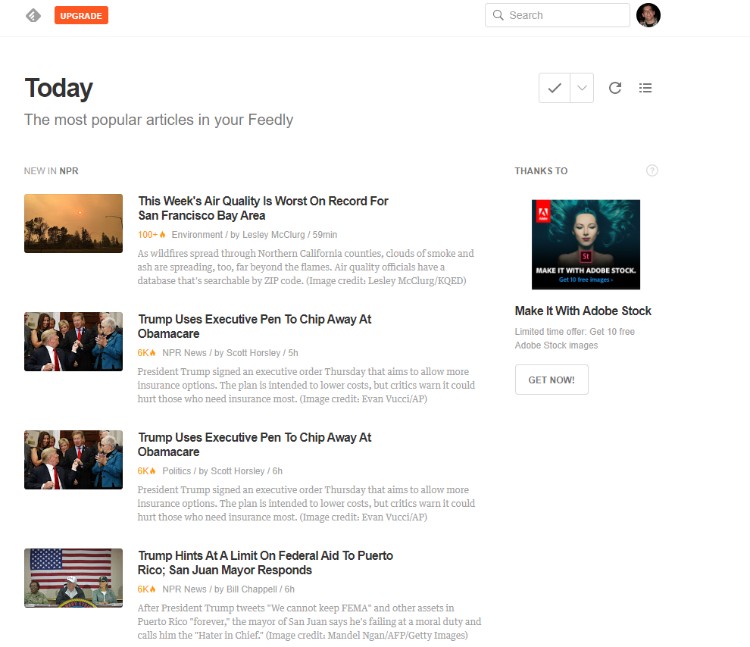
There are dozens of RSS readers to choose from, but here are the most popular:
- Feedly
- Panda
- Feedbin
- NewsBlur
- Selfoss
- Feed Wrangler
- Inoreader
As mentioned, each one has its own charm. For instance, Feedly mimics Google Reader with its cleanliness and organization, while Panda is more of a way to browse multiple websites in one interface. I recommend you test all of them out to see which one is right if you plan on aggregating content. After all, it's going to be your main hub for reading articles.
How to Use RSS with Your WordPress Site
Now that you understand how readers take advantage of RSS, it's time to delve into the what and how for WordPress site owners.
To start, you should know that you'll be interacting with an RSS in one or two ways. The first, and most important, aspect of RSS for website owners is getting that RSS Subscribe button on your site. This acts as a distribution network for your content, all without you doing much work on your end.
How to Add a Link and Icon to Your RSS Feed
You have a few choices to make for this process. Technically, you could go grab an RSS image from Google Images, place that in a widget, and link the image in your sidebar. That would save you the need to install a plugin, but it's often not the cleanest way to go about including an RSS button.
First, check to see if your WordPress theme includes a custom widget for social icons. If a widget is available you should be able to insert it into any widget ready area (sidebar, footer or even top bar).
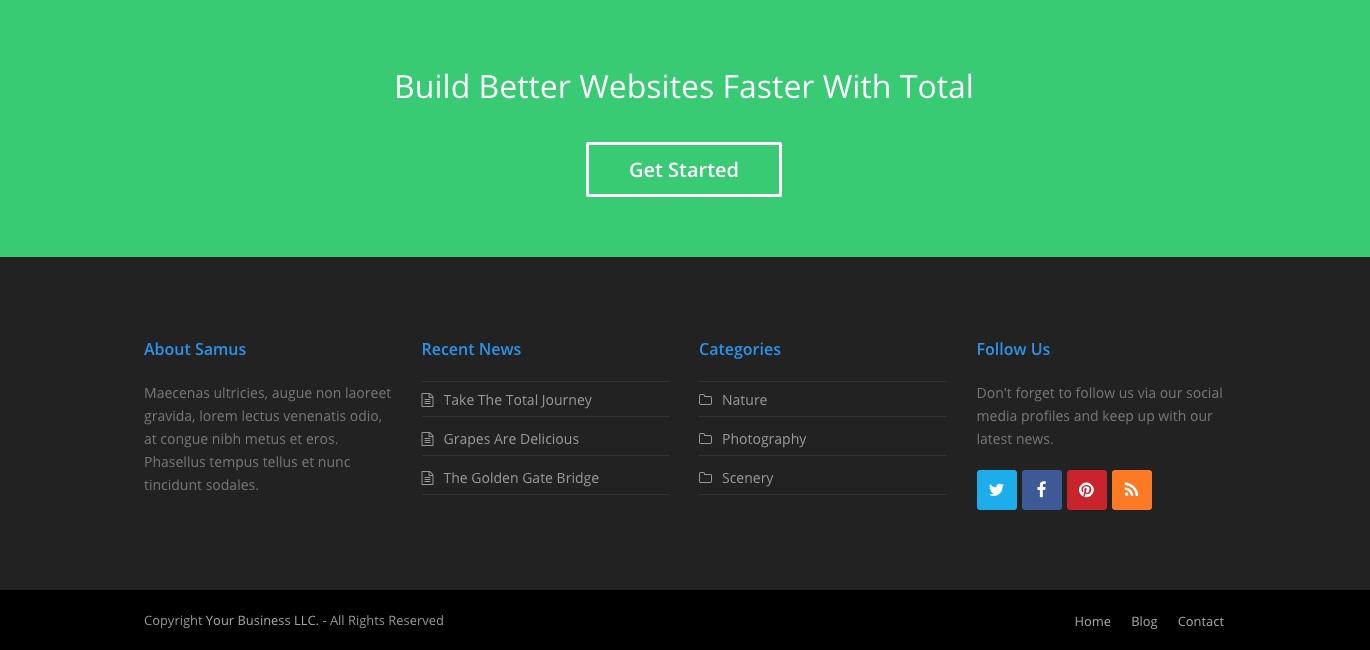
Above is an example of the Total theme social widget (which also includes options for button style, size, order and more). But if your theme doesn't include this built-in feature, you may find that using a plugin is your best bet.
Add a Single RSS Button
Initially, you might try inserting the RSS button by itself. This might be the case if you want to keep it separate from social buttons or maybe place it towards the bottom of your website.
If that's the case, there are a few plugins such as RSS Feed Icon or RSS Icon Widget. They both work fine, but you're not getting any additional functionality like buttons for increasing your social following.
![]()
It's more common to see the RSS button next to your Facebook, Twitter, and Pinterest links, assuming you have those.
Add RSS with Social Media Links
If you'd like to combine all of those buttons in a row, you can typically find social media button plugins that also allow for either a custom icon and link or an actually RSS icon.
Ultimate Social Media Icons does the trick for social buttons and RSS, since it also includes an RSS icon and a field to insert your RSS URL.
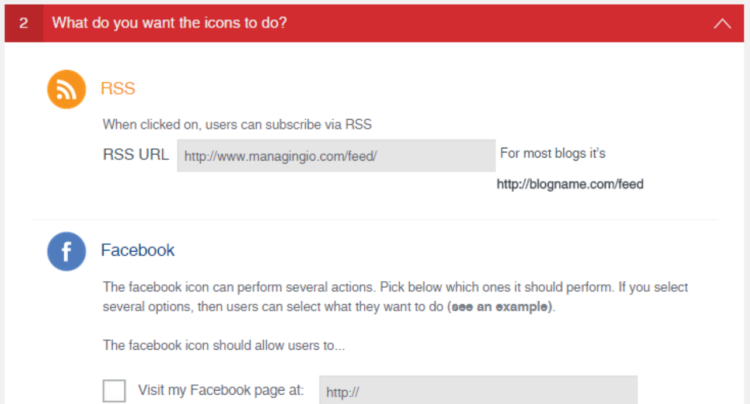
What's My RSS URL?
WordPress automatically generates an RSS feed for you. This feed is a compilation of your articles, and it can be shared with the RSS URL. As you can see in the screenshot above, an RSS URL is required for users to come and click on the button. Most of the time you'll paste this URL into a plugin field, but sometimes you might simply link an image.
Regardless, your RSS URL looks like this:http://www.wpexplorer.com/feed/
The only thing you have to do is replace the "wpexplorer.com" text with your actual website. Once you have this URL it's pretty darn easy to start distributing the RSS feed on your website.
Displaying Multiple RSS Feeds on Your WordPress Site
The second reason you might take advantage of RSS is if you'd like to display 3rd-party feeds on your own WordPress site. For example, maybe you run a finance blog and would like to deliver stock trends from a more up-to-date, credible source. After all, you're not going to be updating stock price variations yourself. You're better off grabbing the RSS feed from CNNMoney or Reuters and inserting it in your sidebar.
The same goes for most news blogs, since it's often impossible to keep up with every corner of the news cycle. A movie blog wouldn't want to miss out on sharing Rotten Tomato scores. And that's where the Rotten Tomatoes RSS feed comes into play.
So, this RSS tactic is more about providing your users with valuable information, as opposed to distributing content throughout the internet.
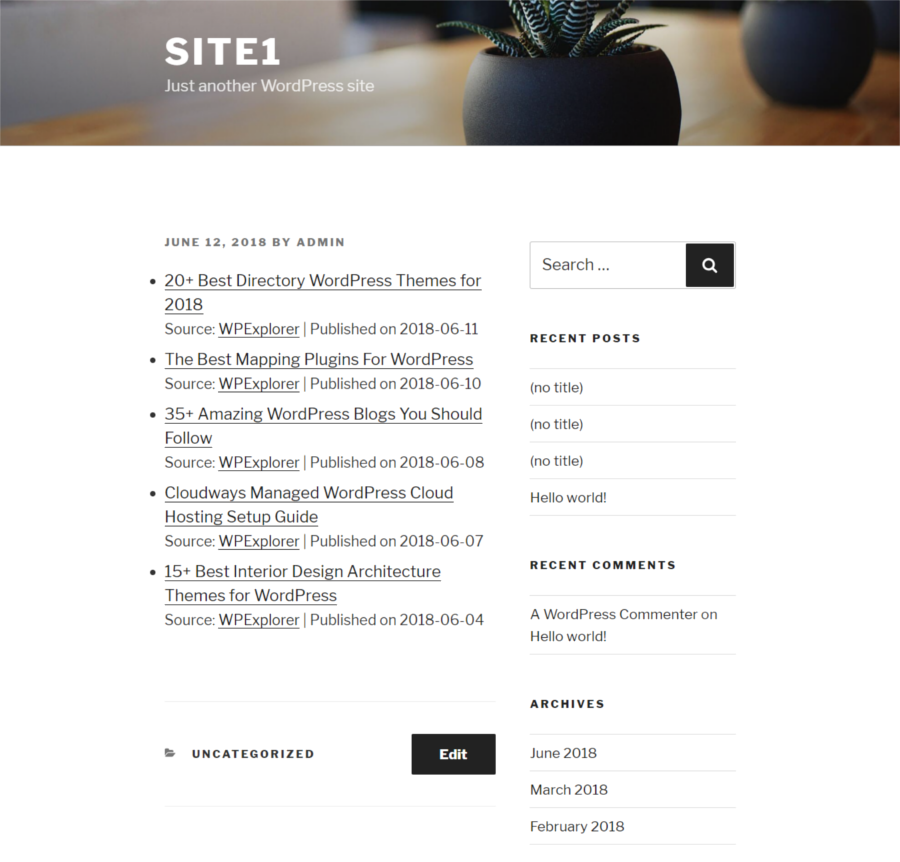
The top plugin to create an RSS news feed on your website is called WP RSS Aggregator.
Download the WP RSS Aggregator plugin and install it on your website. Go to the RSS Aggregator tab in the dashboard and fill in everything from the RSS URL to the name of the feed source. It'll ask you for some other settings like whether you'd like to link to the source and if you want to remove duplicate titles.
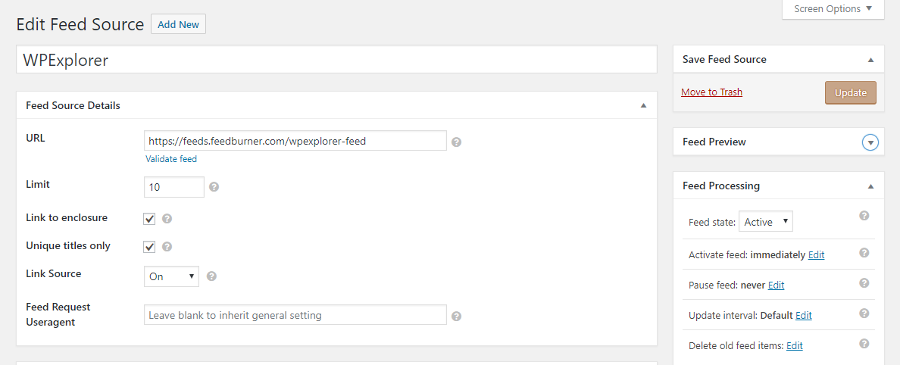
After that, you can manage all your feeds and show them in one constant stream on your website. Place the feed in your sidebar or on its own page.
Why You Need RSS on Your WordPress Site
Some bloggers might dismiss RSS as an old technology. That notion is far from true, especially with tech-savvy readers. Some bloggers think it's more for large magazines. That's not true either.
Some bloggers think it's more for large magazines. That's not true either.
Even if you get five or ten RSS readers, that's pretty darn good for a small or mid-sized blog. It's simply a different way for your users to access content, so it's like an alternative to your email list or when you post on social media.
If you have any questions about using RSS with WordPress, let us know in the comments below.
How Do I Add Rss Feeds To My Wordpress Blog
Source: https://www.wpexplorer.com/complete-guide-rss-use-wordpress/
Posted by: chandlerhostall.blogspot.com

0 Response to "How Do I Add Rss Feeds To My Wordpress Blog"
Post a Comment